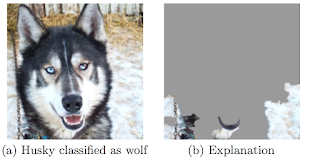Deep learning is a hot topic. Deep neural networks can classify images, describe scenes, translate text and do so much more. It's great that Google and Udacity offer this course which helped me getting started with learning about deep learning.
 |
| Image originally shows me hiking in Switzerland. Deep neural networks at Deep Dream Generator turned the image into a dreamy scene. |
How does the course work?
The course consists of dozens 1-2 minute videos and assignments accompanying the videos.Well, actually it's the other way round: The assignments are the heart of the course and the videos just give you the basic understanding you need to get started building networks. There are no exams.
The course covers basic neural networks, softmax, stochastic gradient descent, backpropagation, ReLU units, hidden layers, regularization, dropout, convolutional networks, recurrent networks, LSTM cells and more. Building deep neural networks is a bit like playing Legos and the course shows you the building bricks and teaches you how to use them.
In the assignments you build and optimize deep neural networks that read hand-written letters from images, learn the meaning of words (a la word2vec), can produce texts and flip words in sentences. The assignments are all based on Google's Tensorflow open source library.
I found the explanations in the videos of high quality. They often visualize the concepts and they did a good job at abstracting the concepts.
The assignments can be a bit difficult and you should expect to work a lot on them. Fortunately you can get help in the course forum and also help your peers. I found the community to be very friendly and helpful.
What prior knowledge is needed?
I agree with the prerequisites listed by Udacity: You should have at least 2 years of programming experience, ideally in Python, and you should be able to fork and pull the TensorFlow git repository from Github. The course requires some knowledge in mathematics (matrix multiplication, differentiation, integration and partial derivatives), basic statistics (mean, variance, standard deviation) and basic machine learning concepts. Prior experience with TensorFlow isn't needed. Experience in working with image or text data is also not necessary.I think you should feel comfortable to read scientific papers, since the assignments encourage you to do so.
All deep neural networks in the assignments can be done with CPUs of most newer laptops (I used an MacBook Pro 13', 2014 model).
The course is self-paced and took me roughly 2.5 months and 4 - 8 hours per week to finish.
Should you take the course?
Yes, given you want to get first hands-on experience in deep learning and/or want to learn TensorFlow.
If you want to do a hands-on MOOC in deep learning there are no other options. For learning the fundamentals you can take coursera Machine Learning class or Neural Networks for Machine Learning.
For me attending the deep learning course lowered the barrier to get into deep learning and I am excited to start building my own deep neural networks.

